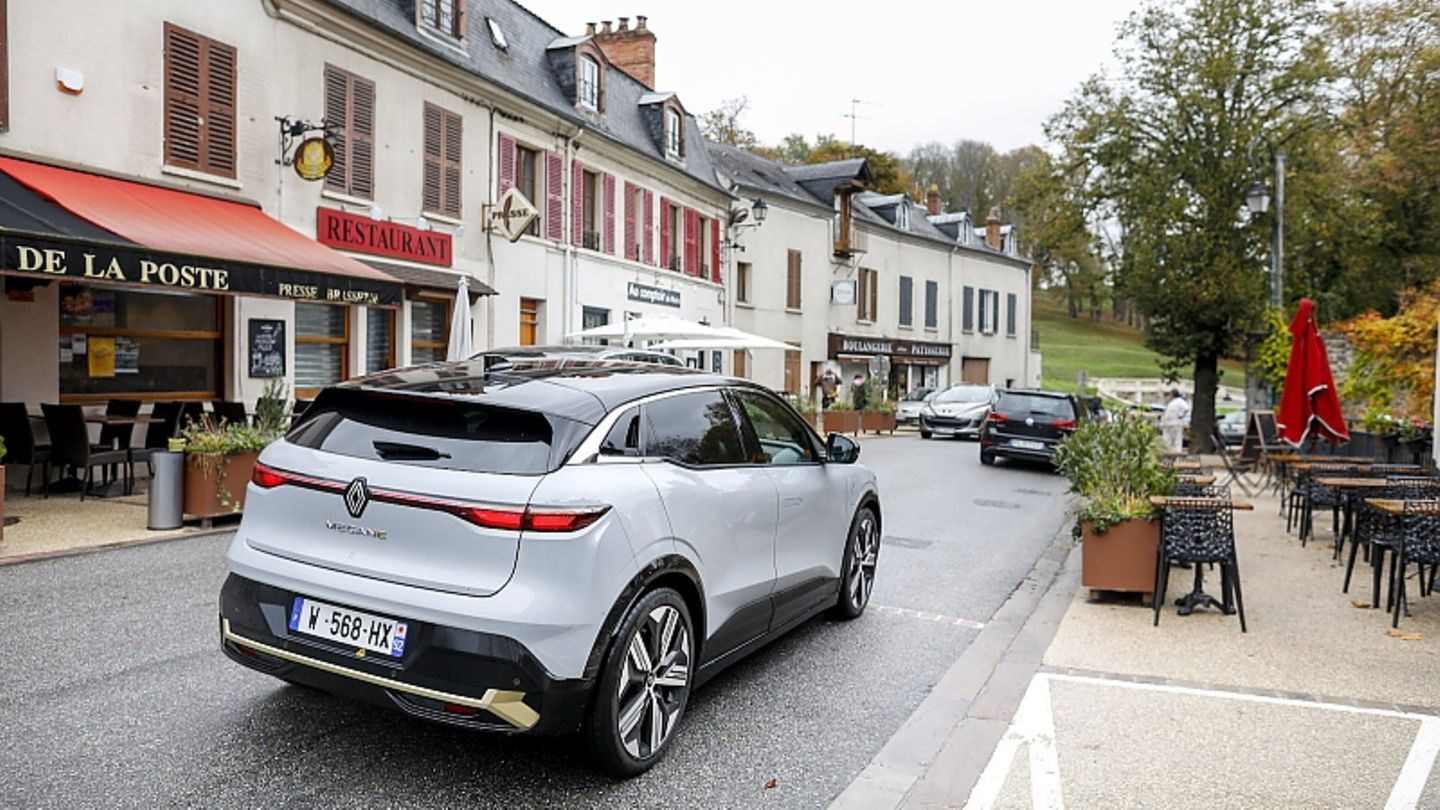Renault and electric cars – you’ve known that for a few years from the Twizy and especially the successful Zoe. But the new Megane E-Tech should make the French into a real electric brand. Parallel to the burner Megane.
Of course it is a crossover and, unsurprisingly, a compact model with slight ambitions for the middle class – the Renault Megane E-Tech is the French answer to VW ID.4 / ID.5, Skoda Enyaq or even Ford Mustang Mach-E and Volvo XC40 Recharge. In the case of electric cars, the transitions between the classes are more fluid than ever; it’s not just about length, engine or proportions. Its design is a real show, because the electric Megane proves that the French have found their way back on the road to success after one or the other difficult model. Short transitions, beefy front design and an attractive rear with narrow LED strips – definitely worth seeing and the new Stromstar need not fear any competition. With the nomenclature, however, Renault messes up, because the name Megane E-Tech Electric expresses the serious electricity approach twice. It is better to shorten it to Megane Electric and take the battery variant right away – EV40 or EV60. That is enough and does not pose problems for either salespeople or customers.
The newcomer from Paris cannot match the wide range of drives and bodies from the Volkswagen Group, with outputs between around 110 to 220 kilowatts, but at least there is no non-negotiable 100 kW / 136 hp, as is the case with the numerous Stellantis models. While the weaker version of the electric Megane has to get by with a narrow 96 kW / 130 PS, the more powerful version with 160 kW / 218 PS / 300 Nm should be the better choice for most customers, not only because of the confident look. Somewhat surprisingly, the Renault Megane Electric, on the CMF-EV platform, is powered solely by the front axle and is not even available with all-wheel drive for an extra charge. From a standing start it goes to 100 km / h in 7.4 seconds.
The small 40 kWh battery pack only manages a narrow 300 kilometers – this is one of the reasons why most customers should order the 60 kWh battery, which then enables ranges of up to 470 kilometers. The 130 kilowatts of charging power should be able to strengthen the batteries between the axles for a further 300 kilometers in half an hour. Eight hours pass on a 7.4 kW wallbox before 400 kilometers have been refueled in the large battery pack and on a 22 charging station it takes half an hour for just 50 kilometers. The standard consumption: narrow 12.8 kWh / 100 kilometers.
The 1.7-ton Renault Megane Electric is a speedy cruiser when driving, because the 160 kW variant is not really sporty either. He pulls off briskly and transfers some driving force to the steering wheel with strong acceleration. But it is not least because of its insulating glass? Whisper-quiet and, despite the stately 20-inch model, the suspension is comfortable enough even on moderate roads. Thanks to a special insulating foam above the battery pack, there are hardly any bumps inside the compact SUV. Apart from the colorful instrumentation for throttle response and steering feel, the individual driving programs are hardly noticeable; In any case, there are no adjustable dampers that would look good on the Megane. The seats fit and look good, but could use a little more contour and are lower than most of the competition thanks to the battery that is only eleven centimeters thick. However, the interior is not too spacious and, especially due to the wide center console, it is rather cramped. It looks very similar in the second row. In the rear, leg / foot space is rather moderate, as you cannot push your feet under the front seat. In the rear there is also no seat heating, which should be standard in an electric car because it takes longer to warm the interior.
In addition, the high shoulder line, the narrow windows and the wide C-pillar inside make the Megane look rather gloomy – also because there is neither a panoramic nor a sliding roof. The driver is happy about the easy-to-use 12-inch touchscreen in the middle of the dashboard and misses a class-standard head-up display. Navigation and operation are from Google and are just as easy to use as you know it from Volvo or Polestar. The four pitman arms, on the other hand, are rather unfortunate. There is no avoiding the operation of indicators and windshield wipers; The situation is different, however, with the elderly radio control via a satellite that can only be felt above the right knee. And why the aisles are operated via another lever higher up and not moved to the center console – for example under the charging cradle – remains a French ergonomic secret.
If you want, you can have the dashboard covered with synthetic leather and, if you wish, the seat panels can be provided with real leather, which makes the Megane Electric appear much more elegant. Unlike some electric vehicles, the Mégane E-Tech Electric does not have a front trunk, as the engineers have decided to pack as much technology as possible under the front hood. This results in a trunk volume of an impressive 440 liters. But here too there is a lack of attention to detail. An electric tailgate control? Nothing. The market launch for the new Renault Megane E-Tech Electric is in March; it should start at around 35,000 euros.
Source From: Stern
I am a 24-year-old writer and journalist who has been working in the news industry for the past two years. I write primarily about market news, so if you’re looking for insights into what’s going on in the stock market or economic indicators, you’ve come to the right place. I also dabble in writing articles on lifestyle trends and pop culture news.




